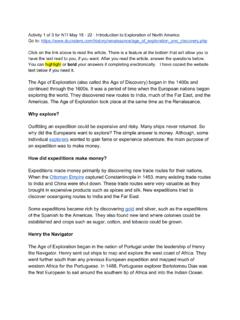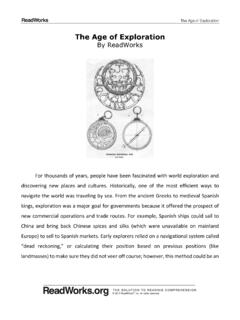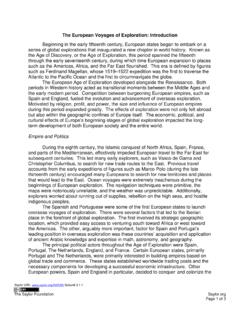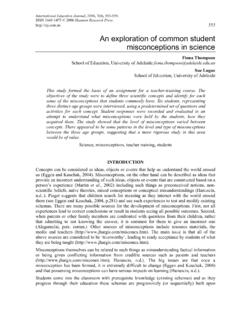Transcription of The Politics of the Solar Age: 1975-2015 - Cadmus Journal
1 Cadmus , Volume 2, , October 2015 , 101-111. The Politics of the Solar Age: 1975 - 2015 . Hazel Henderson Futurist; Evolutionary Economist;. President, Ethical Markets Media (USA & Brazil). Abstract A global transition is manifesting in sustainable technologies, policies and investment tools. We are moving beyond the Industrial Era. Crises in energy, water, food and ecosystem services are being met with many forms of renewable energy; United Nations, NGOs, World Bank and other global programs; and with creative investment opportunities such as green bonds. Paradigm shifts in science, academia, governance, leadership, finance, business, social norms, media, communications and network structures as well as the role of Earth- observing satellites have led to a greater focus on earth systems science. Stress is a basic tool of evolution, and breakdowns drive breakthroughs. While mainstream media operates on the commercial formula of if it bleeds it leads, growing consciousness is accelerating the green transition to more equitable, peaceful, sustainable, knowledge-rich societies.
2 This article explores key drivers of this transformation and the standards being developed to guide us into the Solar Age. The global transition to sustainability is fundamentally based on the current transition from the fossil-fueled Industrial Era to the low-carbon, knowledge-richer, more inclusive economies, green technologies and infrastructure now underway worldwide as Ethical Markets tracks. I published The Politics of the Solar Age in 1981, outlining the struggle observed as a science policy advisor from 1975 through 1980* as incumbent industries in fossilized sectors fought to retain their tax advantages, subsidies and legislated rent-taking. I witnessed how the many viable technologies in Solar , wind, geothermal, ocean systems as well as organic, low-till and halophyte agriculture were suppressed by money in political processes, lobbying, regulatory capture and cognitive capture of compliant commercial media. I reviewed these political processes in the USA, Brazil and worldwide in Mapping the Global Transition to the Solar Age.
3 2015 is the year when all the issues of global sustainability are now mainstream and becoming key agendas in the Politics of most of the 193 United Nations (UN) member countries. The global transition from fossil fuels and nuclear power to efficient use of renewable energy and materials is now accelerating, as we expected when Ethical Markets launched our Green Transition Scoreboard (GTS) in 2009. * From 1975 -1980, the author served on the Technology Assessment Advisory Council to Congress and the US Office of Technology Assessment (OTA);. the National Science Foundation's Research Applied to National Needs (RANN) and the Committee on Public Engineering Policy (COPEP) of the National Academy of Engineering of NAS. Hazel Henderson, Mapping the Global Transition to the Solar Age. ICAEW and Tomorrow's Company, 2014. Available for free download at http://www. Foreword by Dennis Bushnell, NASA Chief Scientist, Langley, Virginia, co-published by the Institute of Chartered Accountants of England and Wales and Tomorrow's Company (London, 2014).
4 101. Cadmus Volume 2 - Issue 5, October 2015 . Anticipating the disappointments of the UN Climate Summit in Copenhagen, we identified the trends in private sector investing in all the new companies and technologies in Solar , wind, efficiency, storage as well as geothermal, wave power and research in the $ trillion total worldwide in 2009. We projected that if the pace of at least $1 trillion annually continues until 2020, the world's economies would shift into the more sustainable, cleaner, knowledge-rich technologies of the next era as described in the aforementioned Mapping the Global Transition to the Solar Age. This transition is well underway as evidenced by numerous reports from Financing the Transition, Long Finance;1 Fiscal Policies and the Green Economy Transition;* and Greening China's Financial Even the fall in oil prices is not derailing the transition to renewable energy and efficiency, especially in developing countries where Solar is growing and oil accounts for only of electricity generation in the key markets where Solar is These trends can address the needs of the billion people lacking electricity, particularly when combined with information technologies like mobile phones and virtual financial Even the natural gas from shale in the USA can no longer change the direction of the transition to renewables, while its current role usurping coal in electric utilities' fuel mixes is leading to new risks and So far, the drivers of this global transition have been the 1) growing risks of fossil fuels and nuclear energy, unaccounted rising costs of resource-degradation, waste, pollution and health impacts (still externalized from company and government accounts).
5 2) pressure on water supplies, collapsing fish stocks, spreading desertification and loss of forests and biodiversity; and 3) the growing recognition of the benefits of the green transition to sus- tainability in public health and safety, environmental quality, more equitable decentralized technologies all of which are available and when scaled could provide unlimited sustain- able energy for all countries. Better Growth Better Climate, the Synthesis Report of the Global Commission on the Economy and Climate, a global consortium of eight research institutes, documents that this green transition will also provide opportunities for jobs and boost sustainable global development.. Since 2009, the rising awareness of these new global possibilities grew worldwide among the grass roots, in academia and at last reached politicians and traditional financial centers. These crises of unsustainability humanity faces were seen more clearly as caused by limited perception of planetary processes and our place in its living biosphere.
6 As we humans began accepting our role in these crises, including climate change, many became empowered to take responsibility to act in this new Age of the Anthropocene. Scarcities of water, arable land and forests which had fueled resource grabbing by multinationals and government sovereign wealth funds increasingly meet with local resistance. A report by The Guardian demonstrated the failure of such privatization * Fiscal Policies and the Green Economy Transition: Generating Knowledge Creating Impact, OECD Green Growth Knowledge Platform Third Annual Conference Report, Ca' Foscari University of Venice, The Energy and Resources Institute, United Nations Environment Programme, the Government of Switzerland, the Government of the Netherlands See for example the Green Transition Scoreboard reports from 2012 and 2013. Better Growth Better Climate, Global Commission on the Economy and Climate, World Resources Institute, EDRI, Tsinghua University, Climate Policy Initiative, Global Green Growth Institute, Stockholm Environment Institute, CRIER, LSE Cities, September 2014.
7 102. The Politics of the Solar Age: 1975 - 2015 Hazel Henderson 1. Countries grabbing land outside their borders7. The tipping point was in 2012 where 50,000 civic leaders met with leaders of 193 UN. member countries and many enlightened businesses and investor groups at the UN Summit Rio+20 in Rio de Janeiro, Brazil.* Our GTS was presented at this summit in many venues with our 2012 total at $ trillion. Corporations and institutional investors signed The Natural Capital Declaration and Roadmap which has since then added hundreds of organiza- tions. Pension funds, particularly in Europe, joined the The alarming weather events and natural disasters of 2013 and 2014 finally brought widespread recognition of anthropogenic climate change and the growing debate about mitigation and inevitable adaptation to rising sea levels and security risks. Global Insights on ESG in Alternative Investing were provided by Mercer and LGT Capital Partners. Many pension fund managers who formerly cited financial risks in divesting from fossil fuels now cite the risks of stranded assets.
8 Thus, defensive, rearview mirror responses gave way to more proactive approaches. Forward-looking financial groups promoted the wide range of new investments and the need to shift portfolios from fossil fuels and stranded assets to market reforms, including carbon taxes and writing down proven reserves which clearly could not be exploited without increasing global warming beyond 2 C. While Solar PV and thermal CSP, wind and efficiency became increasingly attractive and prices, particularly of Solar PV, continue to fall, even The Economist acknowledged the new circumstances in their special report Let There Be Light . All this was made even more attractive by the drop in oil prices below $50. a barrel by January 2015 , allowing governments to withdraw costly subsidies to consumers. Unfortunately, subsidies to producers have largely stayed in place. However, London's FTSE. launched its ex-Fossil Fuels Index series, and the UN's $53 billion Joint Staff Pension Fund has seeded two low-carbon exchange-traded funds (ETFs).
9 9 As carbon assets are downgraded in portfolios, we recommend that these be repriced as in situ chemical feedstocks reserves . to soften the blow. Looking ahead, this acceleration of the green transition is powered by fundamental shifts in human perspectives leading to paradigm shifts in science, academia, governance, leader . ship, finance, business, social norms, media, communications and network structures. The role of space and Earth-observing satellites led to a greater focus on exploration of earth systems science. The computerized digital revolution and social networking underlie all these shifts as efficiency in energy, manufacturing, urban redesign, transport, healthcare, finance and many other sectors of post-industrial societies are digitized and dis-intermediated. Harvard physicist Mara Prentiss links efficiency advances and renewable energy to show how the USA can be 100% powered by these cleaner, healthier systems in Energy Revolution ( 2015 ).
10 10. While we are seeing ourselves anew as one confused, troubled human family, trying to adjust to each other's differing experiences, beliefs and cultural practices, we are also * Report of the United Nations Conference on Sustainable Development, UNCSD, Rio de Janeiro, Brazil, June 2012. Available at The Natural Capital Declaration and Roadmap, UNEP and GCP, 2014. NASA at and at 103. Cadmus Volume 2 - Issue 5, October 2015 . acknowledging the globalization and technologies we have created which we must now address and manage if we are to survive. As we deal with the resulting conflicts, inequality, social fragmentation and mindless violence, humans are learning and survival strategies are emerging. We recall that stress has been a basic tool of evolution in all species, including our own. Breakdowns drive breakthroughs. There is much good news, submerged in mainstream media, still operating on the old commercial formula: violence, sex, scandal as weapons of mass distraction if it bleeds, it leads.









